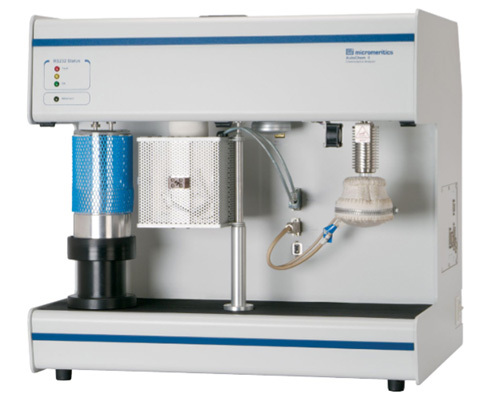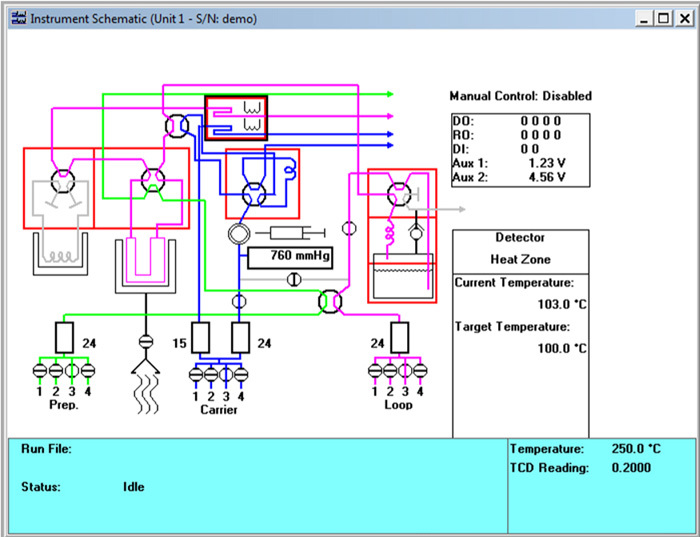
▌Equipment : Dynamic Chemical Adsorption Analyzer
AutoChem II (TPD, TPO and TPR)
The AutoChem II employs fully automated high-precision programmed temperature dynamics and a chemical adsorption analyzer. It facilitates fully automated pulse chemisorption and temperature-programmed reduction (TPR), temperature-programmed desorption (TPD), temperature-programmed oxidation (TPO), and temperature-programmed reaction (TPRx). This includes determining catalytic properties such as metal dispersion percentage, active metal specific surface area, acid strength, surface acidity, distribution of active site strength, BET specific surface area, among others. Consequently, this equipment will assist our center in conducting research and applications in the fields of carbon dioxide conversion adsorption, desorption, transformation, and materials for hydrogen energy.
| Carbon Dioxide Adsorption, Desorption, and Conversion:
1. Catalyst Evaluation: AutoChem II evaluates the efficiency of different catalysts in carbon dioxide conversion. It controls reaction conditions such as temperature, pressure, and gas flow, identifying substance transformations during the reaction process, aiding in catalyst selection and optimizing reaction conditions. 2. Adsorption and Desorption Kinetics Studies: The instrument can real-time monitor carbon dioxide adsorption and desorption processes, contributing to understanding the performance of adsorption materials, including adsorption capacity and kinetic characteristics, helping in selecting appropriate adsorbents and improving efficiency. 3. Surface Characterization Analysis: AutoChem II measures material surface area, pore volume, and pore distribution, providing crucial information for catalyst design and performance assessment. |
| Hydrogen Production Research Applications:
1. Hydrogen Production Reaction Kinetics Studies: The instrument can real-time monitor the kinetics of hydrogen production reactions, providing insights into reaction mechanisms, determining optimal operating conditions, and evaluating catalyst stability. 2. Hydrogen Gas Adsorption Analysis: AutoChem II can be used to determine the adsorption capacity of catalysts or adsorption materials for hydrogen gas, contributing to hydrogen production research. |
The Micromeritics AutoChem II 2920 provides comprehensive experimentation and analysis in carbon dioxide conversion, adsorption, desorption, and hydrogen production research. It serves as a valuable tool for driving innovation in the fields of clean energy and environmental science, serving as an essential research tool for NTUST students and researchers in this domain.

▲The Micromeritics AutoChem II 2920 is currently located in the International Building IB606 at National Taiwan University of Science and Technology. It contributes to research in gas-solid adsorption, desorption, and reactions.

▲It is equipped with four mass flow controllers, an evaporator, a pulse injection system, a rapid temperature programmable furnace, a Cold Trap device, a TCD detector, a liquid nitrogen extraction device, and an external mass spectrometer.




